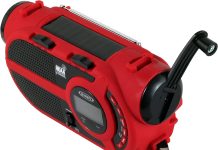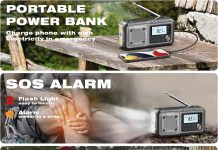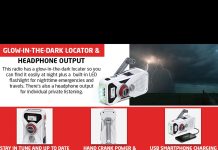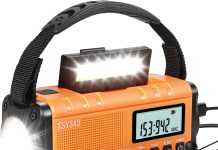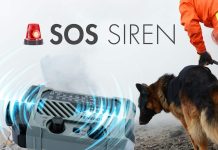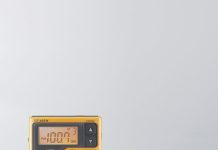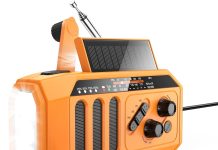Whether you’re an avid outdoor enthusiast or simply want to be prepared for unexpected situations, finding the right emergency radio can make all the difference. With a plethora of options available in the market, it’s essential to know which features to prioritize when making this important purchase. From AM/FM capabilities to weather alerts and even solar-powered charging, each feature plays a crucial role in ensuring your safety and peace of mind. In this article, we will explore the key elements to consider when selecting an emergency radio, equipping you with the knowledge to make an informed decision that suits your needs.
Review contents
Battery Life
Importance of battery life
When it comes to emergency radios, battery life is of utmost importance. During emergencies, power outages are common, and having a radio with a long-lasting battery can mean the difference between staying connected and being left in the dark. A radio with a reliable battery life ensures that you can listen to news updates, receive emergency alerts, and stay informed about the situation around you for an extended period of time.
Types of batteries used in emergency radios
Emergency radios typically use one of three types of batteries: disposable alkaline batteries, rechargeable batteries, or a combination of both. Disposable alkaline batteries are readily available and easy to replace, making them a popular choice. However, they can be costly in the long run, as they need frequent replacement.
Rechargeable batteries, on the other hand, offer a more sustainable and cost-effective option. These radios often come with built-in rechargeable batteries that can be powered through a USB port, solar panels, or hand-crank mechanisms. This allows you to recharge the battery multiple times, reducing the need for constant battery replacements.
Some emergency radios combine both disposable and rechargeable batteries. This feature provides flexibility, allowing you to switch between power sources depending on the availability of electricity and the duration of the emergency.
Average battery life for different radios
The average battery life for emergency radios can vary significantly depending on several factors such as the type of batteries used, the power consumption of the radio, and whether additional features are being utilized. However, most quality emergency radios are designed to provide a minimum of 10 hours of continuous use on a single charge or set of batteries.
It is important to note that the advertised battery life may differ based on various conditions, such as volume level, signal strength, and the usage of additional features like lights or charging other devices. Therefore, it is advisable to consider user reviews and ratings, which often provide valuable insights into the actual battery performance of a radio.
Power Sources
Alternative power sources
In addition to battery power, many emergency radios offer alternative power sources to ensure functionality in situations where batteries may not be readily available or viable. These alternative power sources can be a game-changer during prolonged emergencies or situations where electricity is scarce.
Some radios feature a hand-crank mechanism that allows you to generate power by manually rotating a handle. This can be an effective way to charge the radio’s internal battery or power it directly. Similarly, solar-powered emergency radios have built-in solar panels that harness the energy from sunlight to charge the battery. These radios are particularly useful in areas with ample sunlight or during daylight hours.
Furthermore, some radios have a USB port that can be used to charge the internal battery or even other devices such as smartphones or tablets. This feature is invaluable during emergencies when access to power outlets may be limited, as it allows you to keep your essential devices charged and ready for use.
Ability to charge other devices
One of the key advantages of modern emergency radios is their ability to charge other devices. This feature can be a lifesaver when you need to keep your smartphone, GPS device, or other essential gadgets powered during an emergency. By utilizing the radio’s built-in USB port or a designated charging port, you can connect your device and charge it using the radio’s battery power.
Having the ability to charge other devices not only ensures that you can stay connected and communicate with others but also provides a sense of security knowing that you have a reliable power source for your essential tech gadgets. Whether it’s making an emergency call or accessing vital information, a radio that can charge other devices becomes an essential tool in your emergency preparedness kit.
Solar-powered emergency radios
Solar-powered emergency radios have become increasingly popular due to their eco-friendly nature and the versatility they offer during emergencies. With built-in solar panels, these radios can generate power by harnessing the energy from sunlight. This eliminates the need for disposable batteries or access to electricity for charging.
Solar-powered radios are particularly beneficial in situations where power outages are prolonged, and battery replacements may be difficult to find. By utilizing the power of the sun, these radios can provide a renewable and sustainable source of energy, ensuring continuous functionality throughout the emergency.
It is important to note that the effectiveness of solar panels may vary depending on factors such as the intensity and duration of sunlight. It is advisable to consider the size and efficiency of the solar panels when choosing a solar-powered emergency radio, as larger and higher-quality panels generally yield better results in terms of charging speed and overall performance.
Reception
Types of radios for reception
When it comes to reception, emergency radios offer different options to ensure that you can receive essential broadcasts and stay connected to important information during emergencies. There are three main types of radios used for reception: AM, FM, and SW radios.
AM (Amplitude Modulation) radios are capable of receiving AM broadcasts, which are commonly used for news and emergency updates. AM signals have a longer range and can travel through obstacles and interference better than FM signals. This makes AM radios a reliable choice for receiving critical information during emergencies.
FM (Frequency Modulation) radios, on the other hand, are known for better sound quality and a wider range of FM broadcasts, including music, talk shows, and local news. FM signals are more susceptible to interference and have a limited range, making them better suited for local updates and entertainment during emergencies.
SW (Shortwave) radios offer an extended range of frequencies, allowing you to receive broadcasts from around the world. This can be beneficial during emergencies when local communication networks may be down or when you need to access international news sources for a broader perspective on the situation.
AM/FM/SW bands
Emergency radios often offer the ability to switch between AM, FM, and SW bands, providing you with versatility and access to a wide range of radio broadcasts. By having the option to switch between bands, you can customize your listening experience based on your preferences and the availability of different types of broadcasts during emergencies.
AM bands are often prioritized during emergencies, as they are commonly used for emergency alerts, news updates, and official announcements. FM bands may be utilized for local updates, music, and entertainment, providing a sense of normalcy and familiarity during challenging times. SW bands, on the other hand, offer the ability to access international news sources, allowing you to stay informed about global events that may have an impact on your local situation.
Having an emergency radio that covers multiple bands ensures that you are equipped with the necessary tools to stay connected to essential information and remain informed about the evolving situation around you.
Weather channels
Another crucial aspect of reception in emergency radios is the ability to receive weather updates and alerts. Many emergency radios are equipped with NOAA (National Oceanic and Atmospheric Administration) weather channels, which provide up-to-date weather information, severe weather warnings, and alerts.
NOAA weather channels are dedicated frequencies that transmit weather-related information, including forecasts, storm warnings, and emergency notifications. These channels are invaluable during emergencies as they help you stay ahead of severe weather conditions, such as hurricanes, tornadoes, or blizzards, and allow you to make informed decisions about your safety and the safety of those around you.
By having a radio that can receive NOAA weather channels, you not only stay informed about the weather conditions in your immediate area but also gain access to critical updates from neighboring regions, providing a broader understanding of the overall weather patterns and potential impacts.
Alerts and Warnings
Emergency alerts and warnings
Emergency radios are designed to provide instant alerts and warnings during critical situations. These alerts can be life-saving, providing you with advanced notice of imminent dangers, severe weather conditions, or other emergencies.
With the capability to receive alerts directly from government agencies, emergency radios ensure that you are notified of any immediate threats or important information that may affect your safety. These alerts can include evacuation orders, shelter-in-place instructions, AMBER alerts, and other vital notifications.
NOAA weather alerts
NOAA weather alerts, also known as Specific Area Message Encoding (SAME) alerts, are a crucial feature in emergency radios. These alerts are sent by the National Weather Service and provide detailed information about severe weather conditions, such as tornadoes, hurricanes, floods, and winter storms. By receiving these alerts through your emergency radio, you can take appropriate action to safeguard yourself and your loved ones.
SAME technology allows you to program your emergency radio to receive alerts specific to your location or desired areas. This ensures that you only receive alerts that are relevant to your immediate surroundings, reducing unnecessary alarm and allowing you to focus on the information that matters most during an emergency.
S.A.M.E. technology
S.A.M.E. (Specific Area Message Encoding) technology is a key feature in emergency radios that enables you to customize the alerts and warnings you receive based on your location. This technology allows you to input specific geographic codes, such as county or city codes, to ensure that you receive alerts for the areas that are most relevant to you.
By programming your emergency radio with the appropriate S.A.M.E. codes, you can avoid being inundated with alerts from neighboring regions and receive accurate and timely notifications for your specific location. This customization feature enhances the effectiveness of your emergency radio, allowing you to stay informed without being overwhelmed by excessive alerts.
By utilizing S.A.M.E. technology, you can have peace of mind knowing that you will receive targeted alerts and warnings that are tailored to your immediate surroundings, enabling you to make informed decisions and take appropriate actions during emergencies.
Portability
Size and weight considerations
When choosing an emergency radio, portability is a crucial factor to consider. During emergencies, mobility and convenience are paramount, and having a radio that is lightweight and compact can make a significant difference in your ability to move around and react effectively to changing circumstances.
Emergency radios come in various sizes and weights, ranging from pocket-sized devices to larger portable radios. Pocket-sized radios are extremely compact and can easily fit into your pocket, backpack, or emergency kit, making them ideal for on-the-go situations. These radios are lightweight and offer convenience without compromising on functionality.
Larger portable radios often feature a more robust set of features and capabilities, including more extensive reception options, longer battery life, and additional emergency features. While these radios may be slightly heavier, they usually come with built-in handles or shoulder straps to facilitate easy transportation.
Built-in handles or straps
To enhance portability and ease of use, many emergency radios come equipped with built-in handles or straps. These ergonomic design features allow for easy carrying and transport, ensuring that you can quickly grab your radio and take it with you wherever you go during an emergency.
Radios with built-in handles are particularly useful when evacuating or relocating to a safer location. The handle provides a secure and comfortable grip, allowing you to carry the radio effortlessly while keeping your hands free for other tasks or emergencies that may arise.
Similarly, radios with shoulder straps offer hands-free portability. By slinging the radio over your shoulder, you can navigate through challenging terrain, climb stairs, or attend to other urgent matters, all while keeping your radio within reach for continuous communication and access to critical information.
Waterproof and rugged designs
During emergencies, unpredictable weather conditions and harsh environments are common. Having an emergency radio with a waterproof and rugged design ensures that it can withstand the elements and remain functional even in challenging conditions.
Waterproof emergency radios are resistant to water damage, protecting them from rain, splashes, or accidental submersions. This feature is particularly useful during natural disasters like floods or hurricanes, where water damage can render regular radios useless. With a waterproof radio, you can continue to receive alerts, news updates, and stay connected even in wet or humid environments.
Rugged emergency radios are built to withstand physical impacts and rough handling. They are often constructed with durable materials such as rubberized exteriors or reinforced casings to protect the internal components from accidental drops, bumps, or other forms of impact. This ruggedness ensures that the radio remains operational even in demanding situations, making it a reliable companion during emergencies.
Durability
Materials used in construction
When it comes to durability, the materials used in the construction of an emergency radio play a vital role. High-quality materials enhance the radio’s ability to withstand harsh conditions, impacts, and the test of time.
Many durable emergency radios are constructed with rugged materials such as rubber, plastic, or metal alloys. Rubberized exteriors provide excellent grip and shock absorption, protecting the radio from accidental drops and impacts. Reinforced plastic or metal alloys offer additional protection, ensuring that the internal components remain intact even in demanding environments.
By opting for an emergency radio with sturdy construction materials, you can be confident in its durability and longevity, knowing that it will continue to function effectively throughout emergencies and challenging situations.
Impact and water resistance ratings
To determine the durability and ruggedness of an emergency radio, it is important to consider the impact and water resistance ratings associated with the device. These ratings provide valuable information about the radio’s ability to withstand physical impacts and exposure to water.
Impact resistance ratings, often indicated by the Ingress Protection (IP) code, provide insights into the radio’s ability to survive accidental drops, bumps, or other forms of physical stress. The rating is typically represented by a two-digit number, with the first digit representing solid particle protection and the second digit representing water resistance. A higher rating indicates greater protection against impacts and water damage.
Water resistance ratings, often indicated by the International Electrotechnical Commission (IEC) standards, outline the radio’s ability to withstand exposure to water. The ratings range from minimal water resistance (e.g., no protection or limited splash resistance) to complete submersion resistance. Understanding the water resistance rating of your emergency radio ensures that it can withstand wet conditions and continue to function reliably.
Drop and temperature resistance
Drop and temperature resistance are important factors to consider when assessing the durability of an emergency radio. Drop resistance refers to the radio’s ability to withstand accidental drops or impacts without sustaining significant damage. The radio’s construction, materials, and design features all contribute to its drop resistance.
A drop-resistant emergency radio is designed to mitigate internal damage caused by sudden impacts. This increases the radio’s overall durability and ensures that it remains operational even after accidental drops or falls. Look for features such as shock-absorbing materials, reinforced casings, or internal cushioning to gauge the radio’s drop resistance.
Temperature resistance is equally crucial, especially in extreme climates or emergency situations where temperatures can fluctuate dramatically. A temperature-resistant emergency radio can withstand both high and low temperatures without compromising its performance or functionality. This ensures that the radio remains reliable regardless of the environmental conditions.
By considering the drop and temperature resistance features of an emergency radio, you can make an informed decision about its suitability for your specific needs and the potential challenges you may face during emergencies.
Additional Features
LED flashlight
Many emergency radios come equipped with built-in LED flashlights, adding a valuable extra feature to their functionality. An LED flashlight is particularly useful during power outages or in low-light situations, providing a reliable source of illumination when regular lighting is not available.
The LED flashlight feature in an emergency radio serves multiple purposes. Firstly, it allows you to navigate in the dark, ensuring your safety and preventing accidental injuries. Secondly, it provides illumination for reading maps, emergency manuals, or other important documents. Lastly, the flashlight can be used as a signaling device, allowing you to attract attention or communicate with others in emergency situations.
The LED flashlight is often designed to be energy-efficient, allowing you to conserve the radio’s battery life while still providing sufficient brightness when needed. This additional feature adds versatility to the radio, making it a multi-functional tool that covers both communication and emergency light sources.
Built-in compass
A built-in compass is a valuable feature in an emergency radio, providing you with an essential navigational tool when traditional methods such as GPS or cell phone navigation may not be available. A compass allows you to determine your direction and navigate accurately, ensuring that you can find your way even in unfamiliar or challenging terrains.
During emergencies or evacuation scenarios, having a reliable compass can be critical for determining the safest route or finding the nearest shelter or emergency services. It also adds a sense of security and confidence, knowing that you have a reliable tool to guide you in uncertain situations.
Built-in compasses in emergency radios are often designed to be accurate and easy to use. They may feature a liquid-filled design for smooth movement or be integrated into the radio’s display for convenience. By having a compass as part of your emergency radio, you are equipped with an essential tool for navigation, enhancing your overall preparedness and safety.
Built-in smartphone charger
In today’s digital age, staying connected through smartphones is crucial, even during emergencies. Many emergency radios now offer the convenience of a built-in smartphone charger, allowing you to charge your phone or other USB-powered devices directly from the radio’s battery.
Having a built-in smartphone charger eliminates the need for additional power banks or adapters, streamlining your emergency preparedness kit and ensuring that you can keep your essential communication devices charged and ready for use. This feature also eliminates the reliance on traditional power outlets, which may not be readily available during emergencies.
The built-in smartphone charger feature in emergency radios is often designed to be energy-efficient and compatible with various smartphone models. It allows you to charge your phone while still utilizing the radio’s primary battery for radio reception and other emergency features. This added convenience ensures that you can stay connected, access important information, and communicate with others when it matters most.
Ease of Use
Intuitive controls and interface
During an emergency, every second counts, and having an emergency radio with intuitive controls and an easy-to-navigate interface is essential. The last thing you want is to struggle to find the right buttons or decipher a complex menu system when you need quick access to vital information.
An emergency radio with intuitive controls allows for effortless operation, ensuring that you can quickly adjust the volume, switch between channels or bands, and activate emergency alerts with minimal effort and time. Look for radios with clearly labeled buttons, ergonomic designs, and user-friendly interfaces to ensure ease of use even in high-stress situations.
Pre-programmed channels and presets
To simplify operation and enhance convenience, many emergency radios come with pre-programmed channels and presets. Pre-programmed channels allow you to quickly access commonly used frequencies, including local news stations, weather channels, and emergency broadcast channels.
Having pre-programmed channels eliminates the need for manual tuning or searching for specific frequencies during an emergency. With a simple push of a button, you can switch between different channels and receive important updates without delay.
Similarly, presets allow you to store your favorite channels or frequently used frequencies for easy access. This feature provides customization and personalization, allowing you to save your preferred stations and quickly navigate between them. By utilizing presets, you can streamline your listening experience, ensuring that you can quickly access the channels that are most relevant and important to you during emergencies.
Clear and readable display
In emergency situations, having a clear and readable display on your emergency radio is crucial. The display allows you to read important information, navigate through various settings, and receive updates with ease and accuracy.
Look for radios with backlit displays, adjustable brightness settings, and large, easy-to-read fonts. These features ensure that the display remains visible even in low-light conditions or when the radio is being used outdoors during daylight hours.
Additionally, radios with LCD screens often provide additional information such as battery life, signal strength, and time. These details can be invaluable during emergencies, allowing you to gauge the radio’s performance and make informed decisions about power management and usage.
By choosing an emergency radio with a clear and readable display, you can ensure that you can access critical information at a glance, regardless of the lighting conditions or the urgency of the situation.
Price Range
Budget-friendly options
Emergency radios come in a wide range of prices to suit different budgets. For those looking for a budget-friendly option, there are affordable emergency radios available that offer basic functionality and essential features.
Budget-friendly emergency radios may have a simpler design, fewer advanced features, or shorter battery life compared to higher-end models. However, they still provide the core functions necessary for staying connected during emergencies, including AM/FM reception, weather alerts, and basic power options.
While budget-friendly options may not offer all the bells and whistles of more expensive radios, they still deliver reliable performance and serve as a cost-effective solution for individuals or families on a tight budget.
Mid-range emergency radios
Mid-range emergency radios strike a balance between affordability and advanced features. These radios offer a broader set of functionalities, improved reception capabilities, and longer battery life compared to budget-friendly options.
Mid-range radios often include features like additional bands (such as SW), longer-lasting batteries, increased water and impact resistance, and enhanced reception technology. They may also offer more customization options, larger displays, and a wider range of presets.
For those seeking a reliable emergency radio with improved performance and additional features without breaking the bank, mid-range options provide a valuable compromise between affordability and functionality.
Premium options with advanced features
Premium emergency radios cater to those who prioritize advanced features, durability, and the most cutting-edge technology available. These radios often offer the latest advancements in battery life, reception capabilities, durability, and additional features that greatly enhance their functionality.
Premium emergency radios may include features such as longer battery life, multiple power sources (e.g., solar power, hand-crank mechanism), higher water and impact resistance ratings, and extensive reception options like shortwave bands.
Additionally, premium options may incorporate advanced navigation tools, multiple charging ports for charging devices simultaneously, larger and more vibrant displays, and greater customization options. These radios often utilize high-quality materials, precision engineering, and advanced circuitry to deliver superior performance in even the most challenging conditions.
For those who prioritize top-tier performance, durability, and a comprehensive array of features, premium emergency radios offer the ultimate package for emergency preparedness.
Reviews and Ratings
Researching customer reviews
When purchasing an emergency radio, it is highly recommended to research customer reviews to gain insights into the performance, reliability, and overall user experience of the radios you are considering. Customer reviews provide real-world feedback and valuable perspectives that can help you make an informed decision.
Reading customer reviews allows you to understand how well the radio performs in different scenarios, including emergencies and various environmental conditions. You can learn about the user’s experiences with battery life, reception quality, durability, and the overall usability of the radios.
When researching customer reviews, it is important to consider both positive and negative feedback. Look for common themes and patterns to get a well-rounded perspective. Pay attention to reviews that mention specific features, potential weaknesses, and the overall satisfaction level of customers.
Relying on trusted sources
In addition to customer reviews, relying on trusted sources for information can provide you with valuable insights and ensure that you are making an informed decision. Trusted sources often conduct comprehensive reviews and evaluations of emergency radios, assessing various aspects such as performance, durability, features, and ease of use.
These sources may include reputable electronics or emergency preparedness websites, magazines, or blogs. By referring to these trusted sources, you can access expert opinions, detailed comparisons, and objective evaluations of different emergency radios.
When referring to trusted sources, it is important to consider multiple perspectives and cross-reference information to ensure that you get a comprehensive and balanced understanding of the radios you are interested in.
Comparing ratings and feedback
Comparing ratings and feedback from both customer reviews and trusted sources can help you gauge the overall quality, performance, and reliability of emergency radios. Ratings provide a quick reference point for evaluating different radios, allowing you to compare their overall satisfaction levels and performance.
When comparing ratings, pay attention to specific categories such as battery life, reception quality, durability, and ease of use. These categories align with the key factors and features you are looking for in an emergency radio.
Additionally, feedback from other users and experts can provide additional context and insights. Look for detailed comments or testimonials that align with your priorities and needs. By considering both ratings and feedback, you can make a well-informed decision and select an emergency radio that best fits your requirements.
In conclusion, when purchasing an emergency radio, it is important to consider several factors such as battery life, power sources, reception capabilities, alerts and warnings, portability, durability, additional features, ease of use, price range, and reviews and ratings. By carefully evaluating these aspects and understanding how they contribute to the overall functionality and reliability of an emergency radio, you can choose a radio that best suits your needs, ensuring that you are prepared and connected during emergencies.


